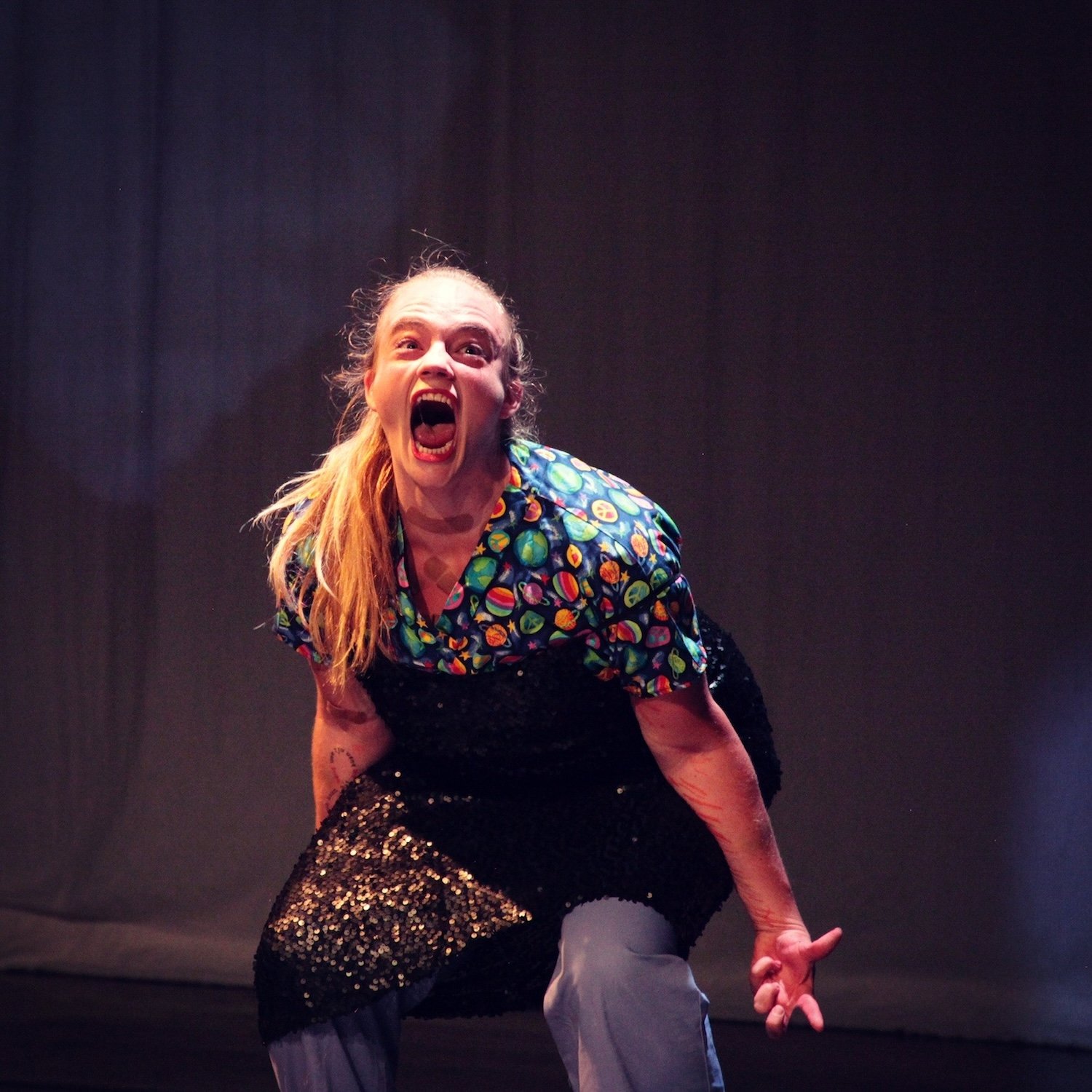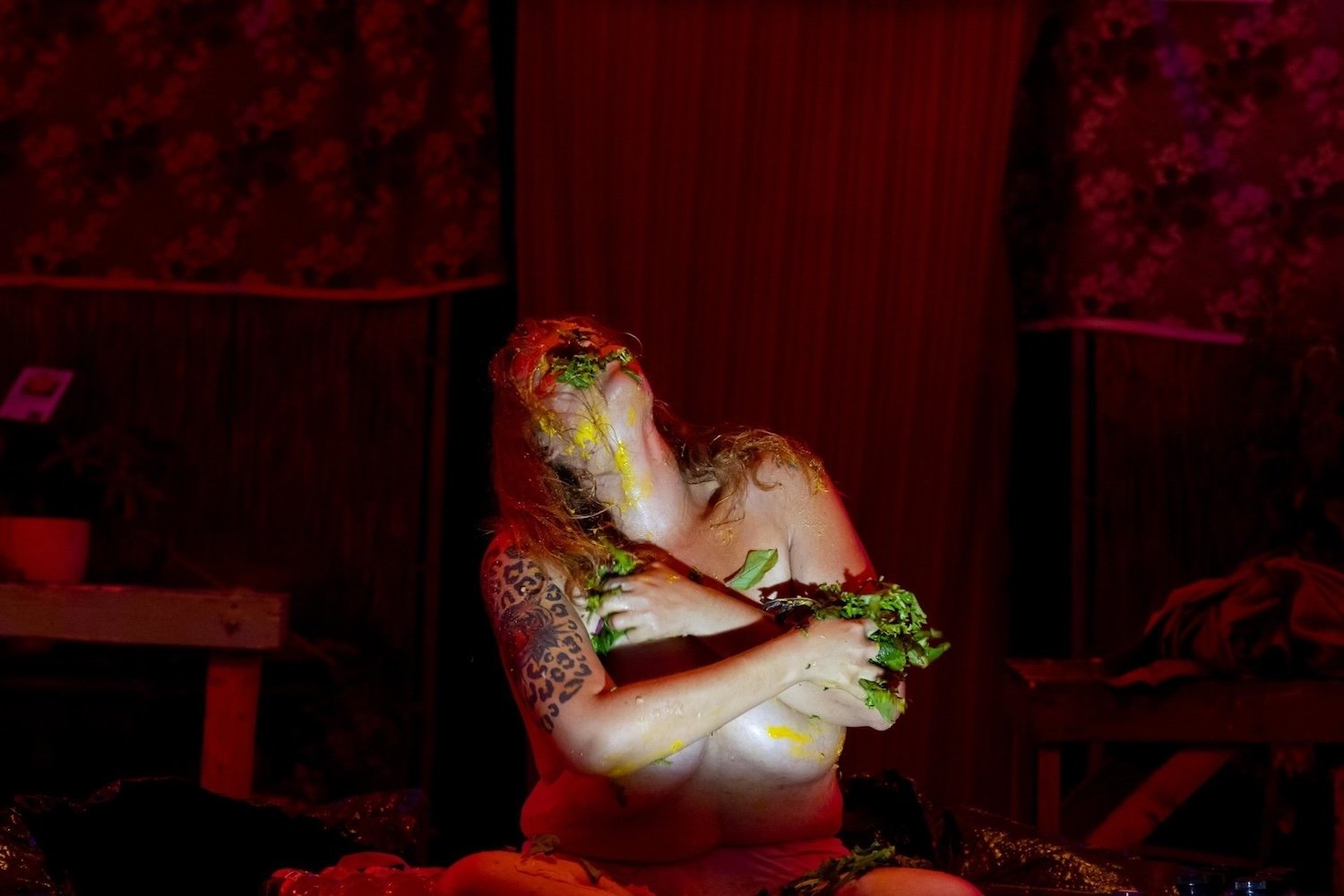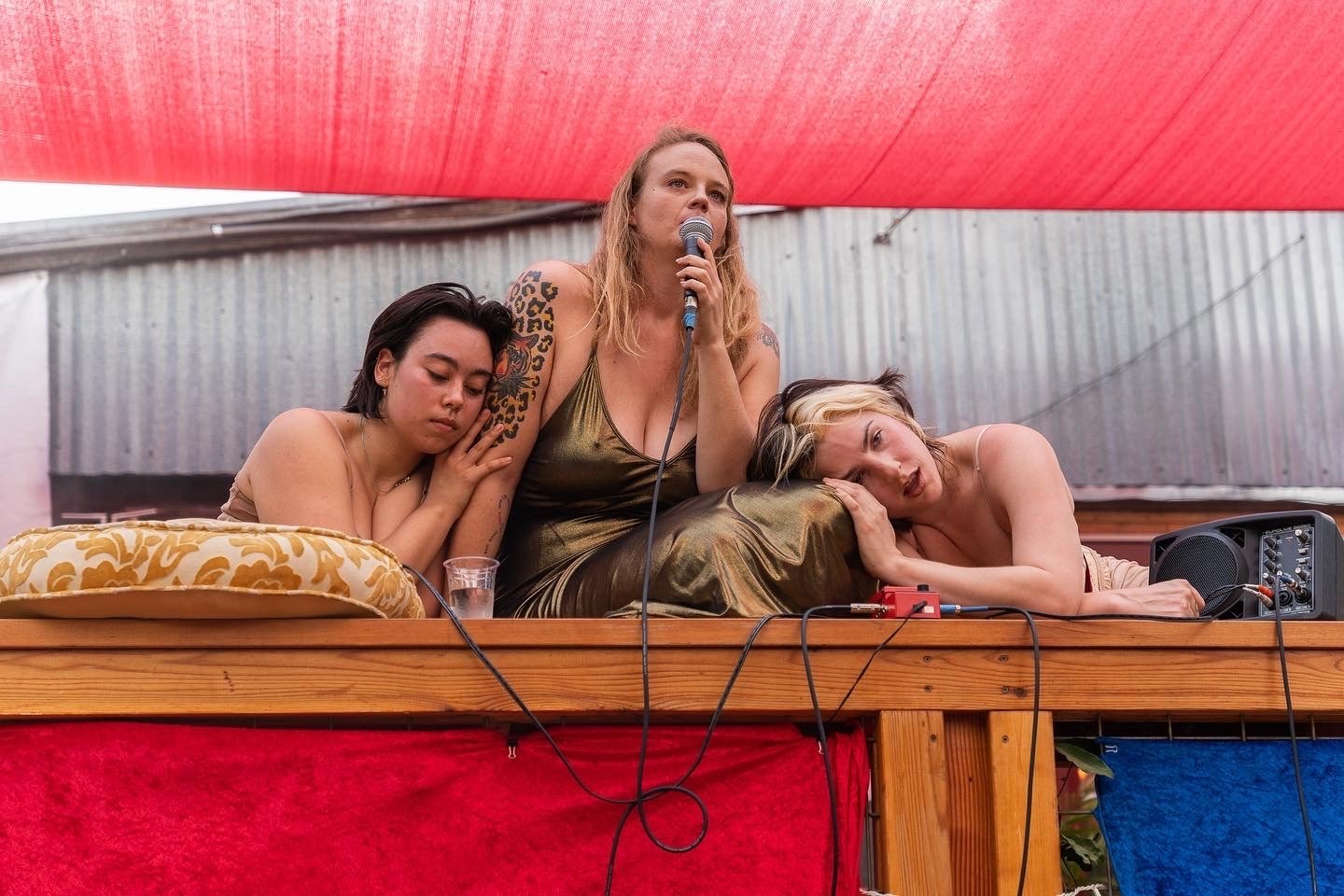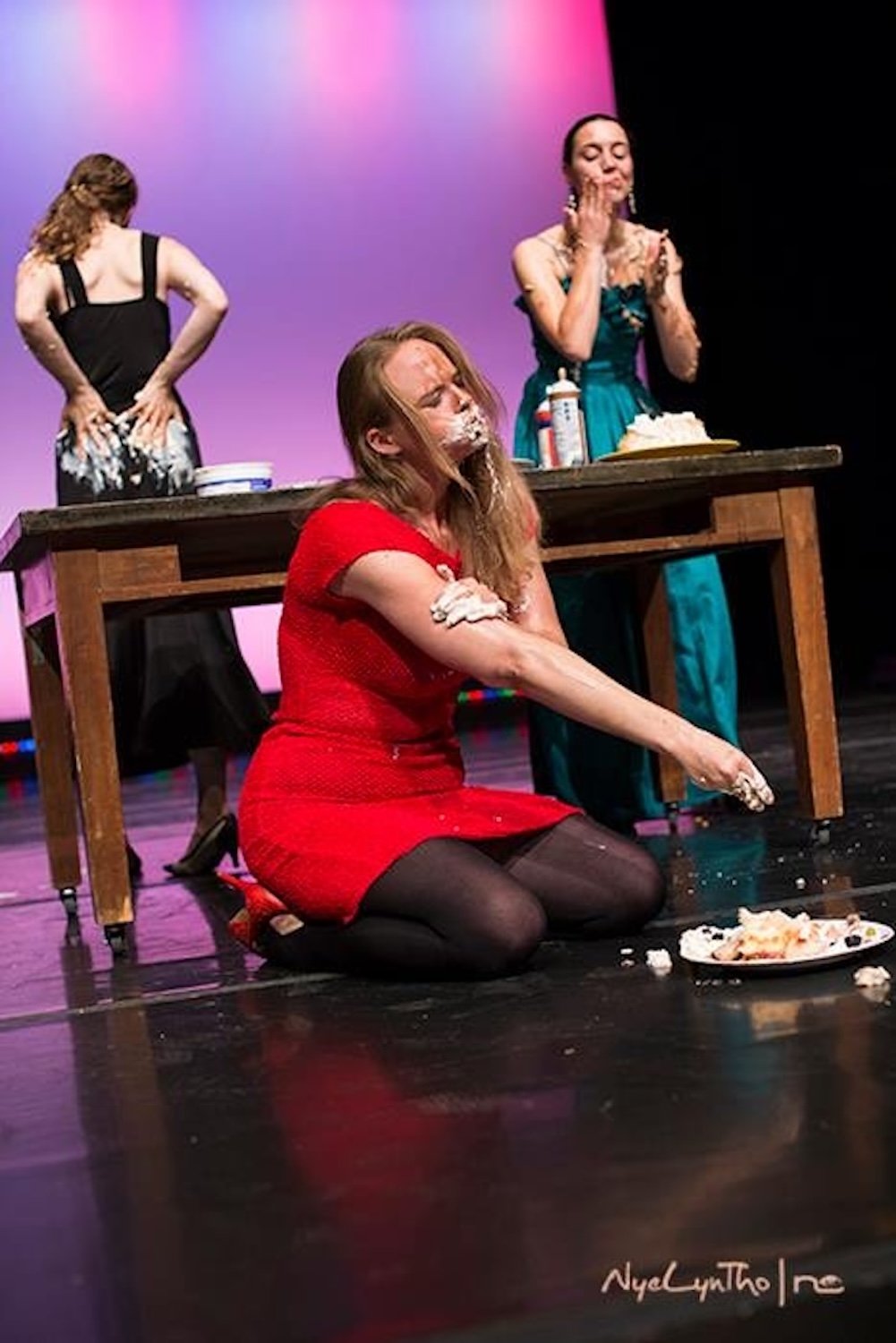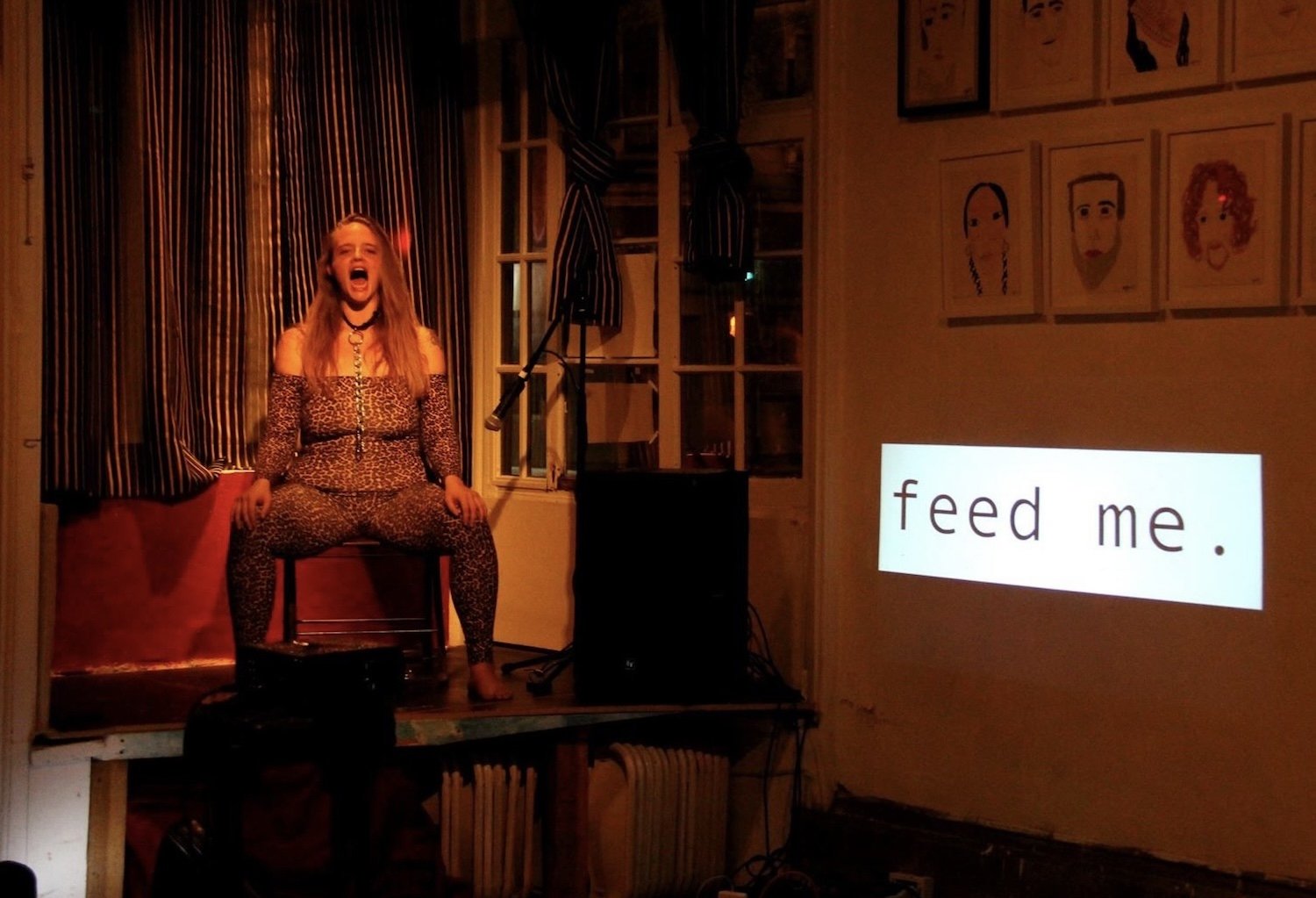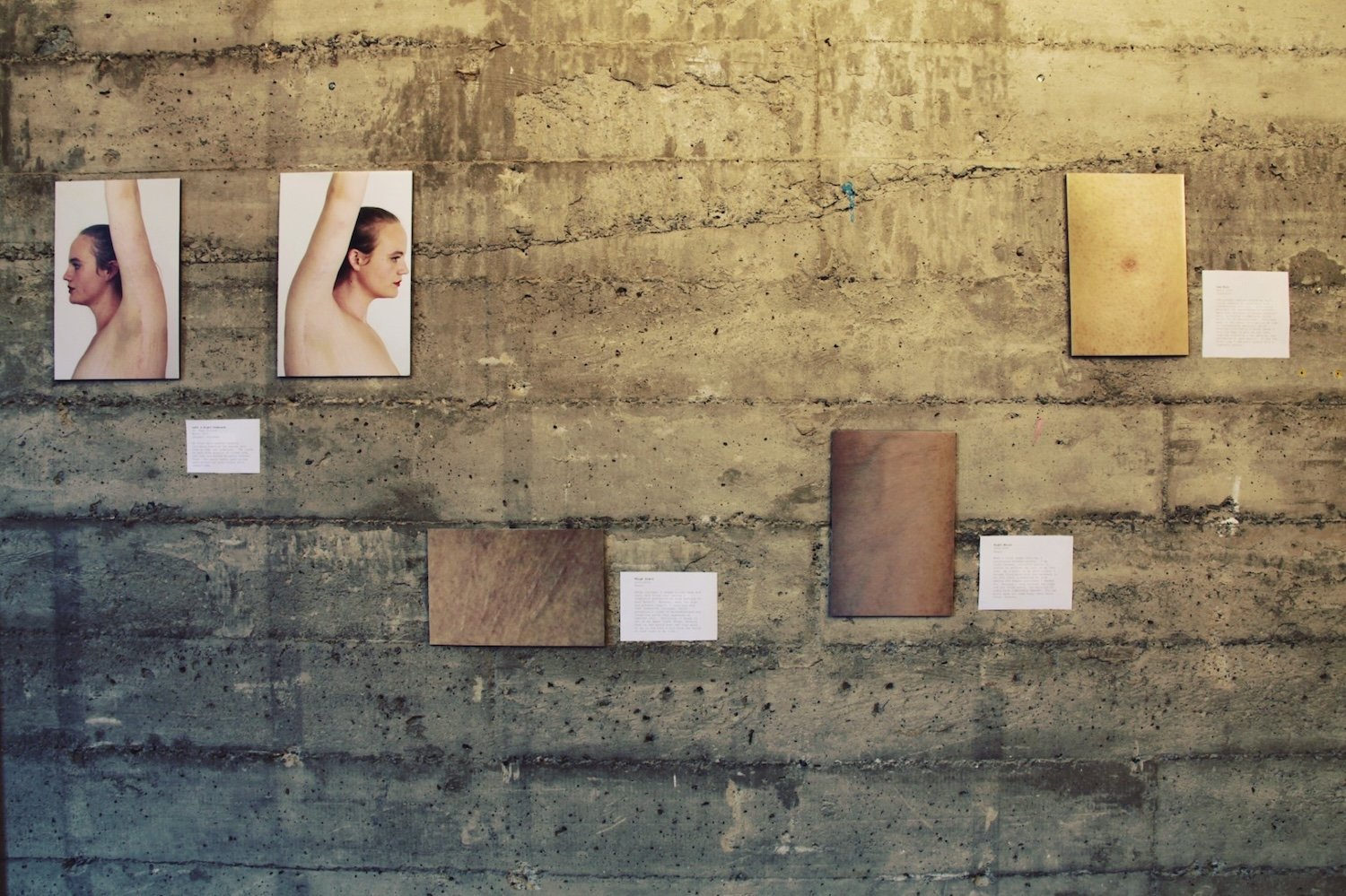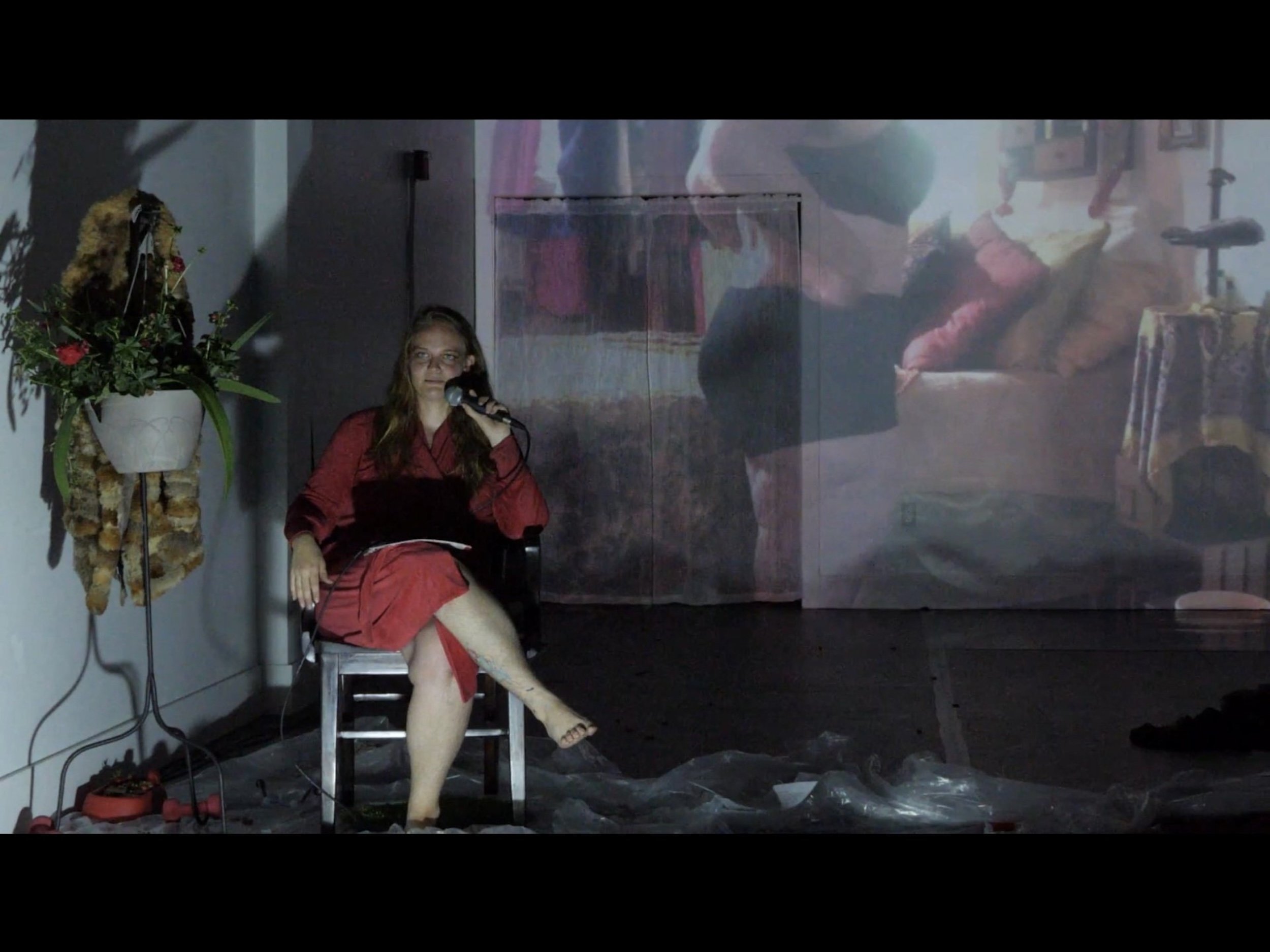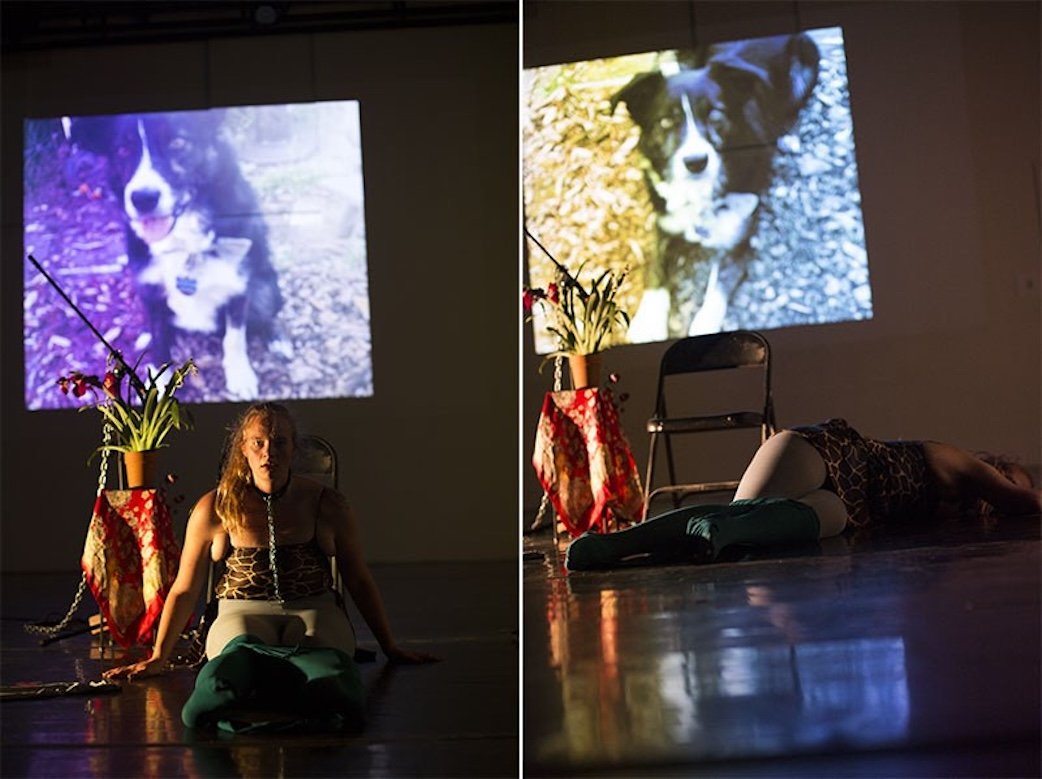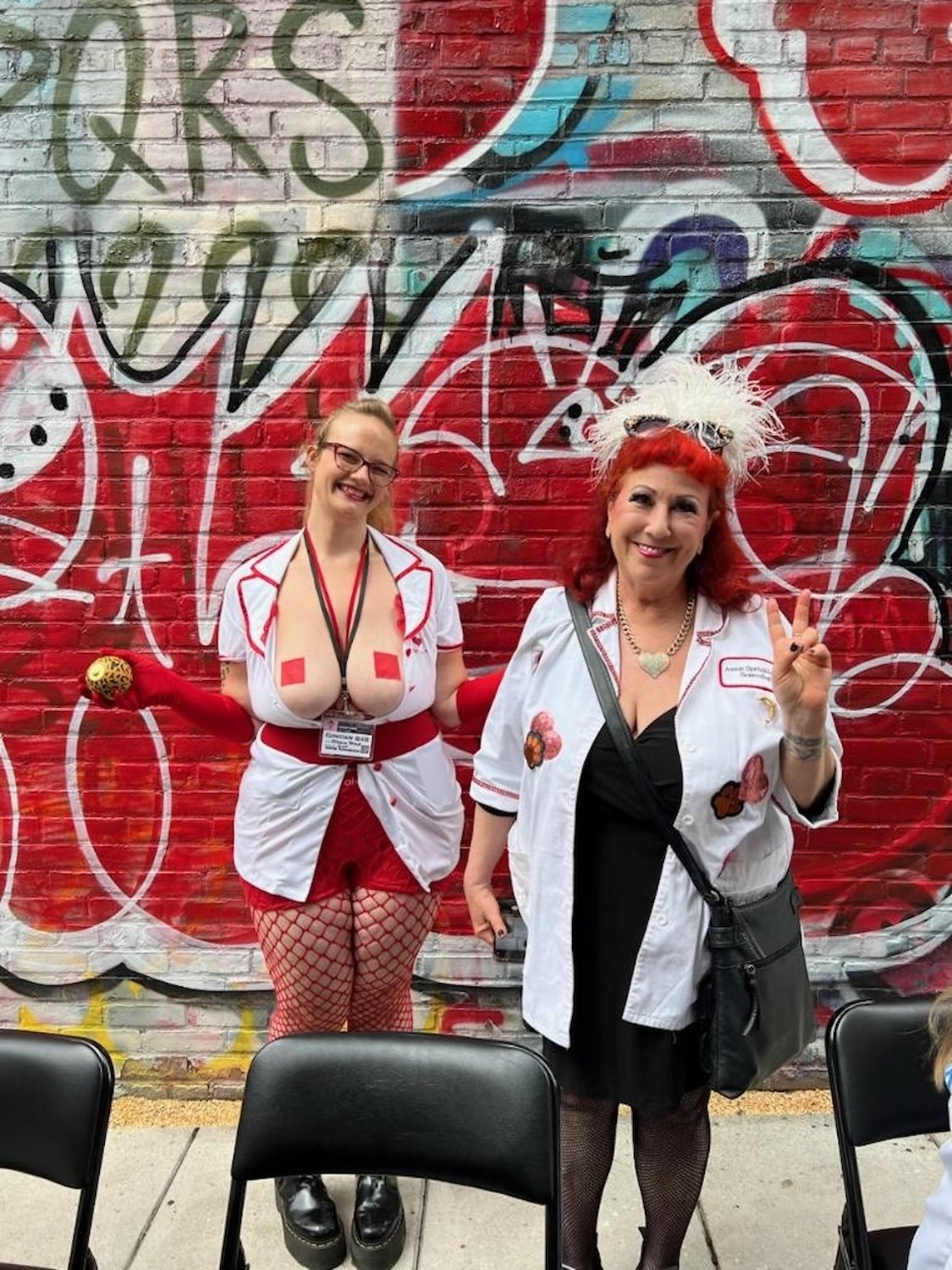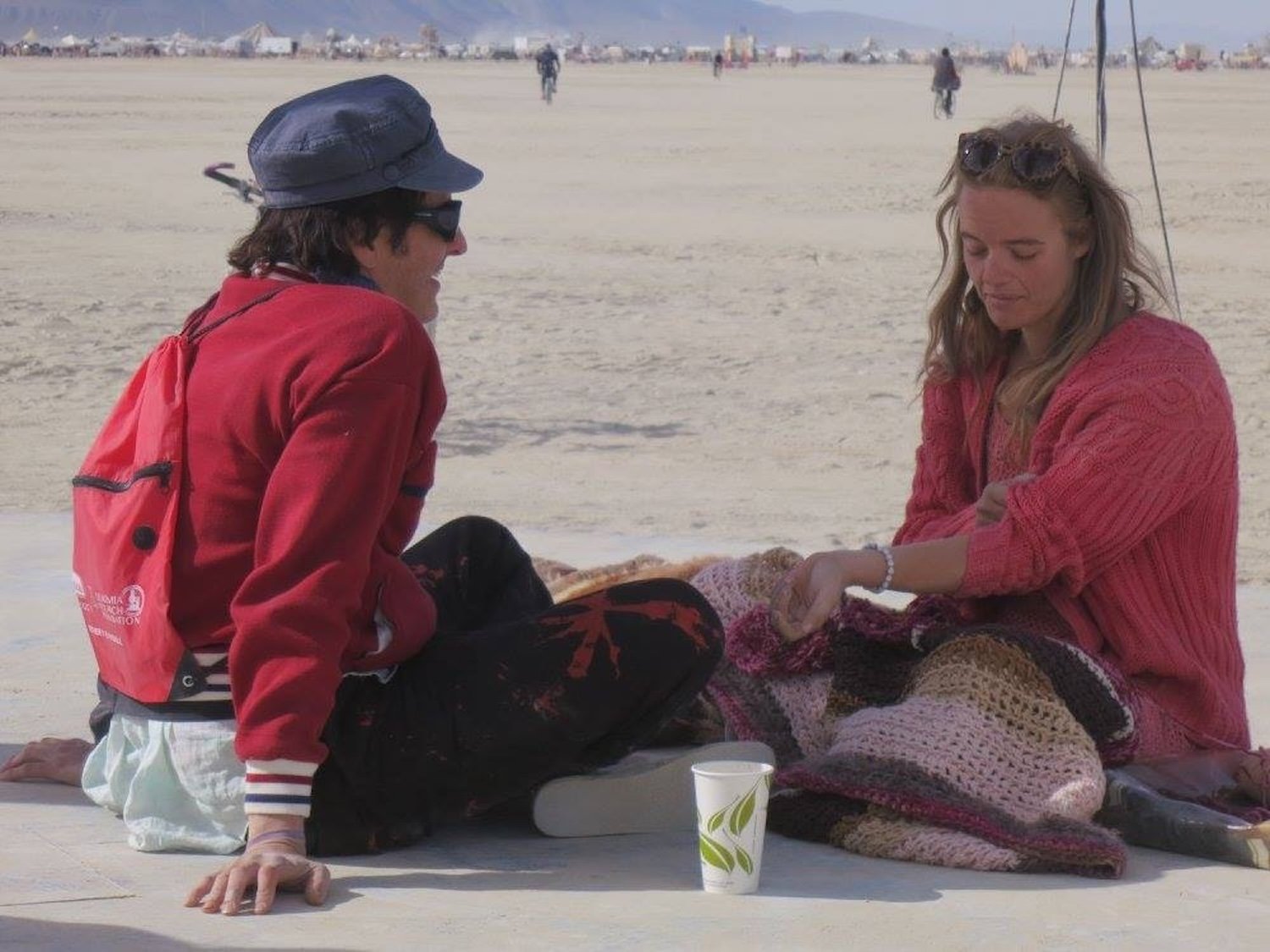Greer Sikes
Nicolás Dumit Estévez Raful Espejo Ovalles: We met in 2023 in New York City at Exploring the Earth as Lover: Ecosex and the City, the Ecosex Symposium organized by Beth Stephens and Annie Sprinkle, two beloved teachers and friends. You and I were both clinicians at their Ecosex Sidewalk Clinic at Performance Space. Later, the same year, we coincided in Austin, Texas, at The Vortex. Beth and Annie had brought us together one more time and here we are!
Greer Sikes: Yes, indeed, here we are! Getting to meet my idol, Annie, as well as Beth Stephens plus you and all the artists whose work centers both personal pleasure and community joy was truly a dream come true this past summer. I first came across Annie’s work in graduate school five years ago while researching my thesis, and it feels both very kismet and very wholing to have our creative work and communities now intersecting. I also got the chance to meet Dr. Veronica Vera and Veronica Hart: icons in the pleasure art world!
NDEREO: I am very much enjoying the communities that Beth and Annie have been co-creating. They are extremely generous. I am curious about your work with scars. Can we focus on this subject, and can you expand on it?
GS: Absolutely! I love scars! I have more inches of scars on my body than I have inches in height! I once counted them all; there are well over 200 individual scars, but I forgot the official number. Scars are what hold me together. They are also the fossil of my life experience–my hieroglyphics for future grave diggers.
I believe the only place I can truly create from authentically as an artist is my own phenomenology: which is my life experience. Growing up, I used self-harm as my primary coping mechanism for getting through my childhood. I was also obsessed with becoming a smaller version of myself, because I believed my loneliness in childhood was due to my morbid obesity (and much of it was–the 1990’s and 2000’s were not kind to chubby people; fat acceptance was a social trend that beame popularized in the 2010’s, after I had already graduated college. I even had a college professor tell me I’d be successful–if I lost weight). By the age of 15 the scars on my arm stopped healing due to the depth and repetition of the fossils I was carving, and I continued this practice into my college years.
When I was in undergrad I studied Gaelic and my instructors were full blown Celts. Our TA, Mairead, still practiced a very common Irish (and beyond) tradition of scaring your body to signify major life events. She raised her sleeve one day in class to show us three deep cuts on her arm. She didn’t tell us what they were for, but in that moment, we shared a secret connection. I felt both understood, and like I belonged to something I’d never been a part of (funnily enough, I am thoroughly Celtic myself).
Prior to that experience in 2009, and because I believed my problem to be my size, I eventually ended up putting my body through the most severe slice of my life: removing a part of my stomach. I had attempted to lose weight “the natural way” my whole life, but ultimately gastric sleeve surgery and the removal of part of my internal organs was what helped me get the boulder over that hill. Two years later, I added more scars to my body with two more surgeries to remove the excess skin hanging from my now “normal sized” frame. I even had a breast lift which permanently altered the shape and size of my areolas–a decision my doctor made without my consultation.
But I didn’t mind at the time. Because I just wanted to fit in. I assumed this male doctor who changed my breasts permanently without my consultation, just wanted me to fit in too. And fitting in meant getting rid of or covering up all the parts of ourselves not perfect or pretty enough for others. I spent my whole life trying to cut away the parts of myself I believed made me unlovable. Until the morning I began to practice self-love while sitting in my bed, gently kissing my own flesh; I was showing affection to the scarry parts of my body. Years later artists like Bob Flanagan would teach me that the embrace of our pain is a work of art in its own right. Who's to tell me these flesh fossils aren’t the most beautiful thing in MY existence?
This is the moment I began to see scars as a work of life’s art. Something not to be hidden so that we can be loved, but something to be shared courageously so that we have the capacity to offer more love. Part of my work with phenomenology has helped me to understand that the source of what we care about: is what directly affects us. Not because we are selfish or lack compassion for others' experiences–simply because it is near impossible to have empathy for something you have no experience with. I believe most performance art is an attempt to draw our collective darkness underneath a spotlight: to share experiences that our society tries to hide. And I believe if we began to treat our scars just as reverently as we did paintings hanging on gallery walls, perhaps we might begin to see and treat one another that way as well: reverently.
I suppose that is the long version of the origin of my fascination with scars. It comes from my inner desire to tell the stories the world has told us to silence; to love what has been told is unlovable. I want to experience the pleasure that is always found on the other side of pain: the self-love I trade for my shame. And I want others to be less afraid to roll their sleeves up and show other people their scars. Because why would we continue to hide the thing that’s keeping us held together? Sharing our stories is like sharing our food: it’s nourishing.
NDEREO: One common thread in our practices is food. I got to see Splosh at The Vortex, the incredible performance space in Austin. Your performance for this venue during the Green Theater Symposium brought me back to Paul MacCarthy, Karen Finley and to some of the actions I did way back. And there is something particular in how you deal with food. What are some of the stories informing this aspect of your creative practice?
GS: Food has a dear place in my phenomenology. I believe food was my best friend as a child growing up. I used addictive behaviors as coping mechanisms for the majority of my upbringing, and was myself raised by addicts, so it took a while to recognize how unhealthy my relationship with food was. By the age of six or seven, food stopped nourishing me, and had started to become my method of preferred dissociation. I used to wait for everyone to go to bed at night just so that I could sneak into the kitchen and raid the pantry and fridge: the highlight of my day for a decade and a half of my life, which led to the development of what is called Compulsive Overeating Disorder (eating excessively for no [perceived] reason or beyond the point of comfort because you are unable to stop).
The removal of my stomach forced me to change my relationship with food. Whereas before food was my comfort, my friend, now it could put me into extreme pain and risky health situations if I ate one bite too many (known as “Dumping Syndrome”). My surgery forced me to face my food addiction, but to also consider food beyond sustenance. Food wasn’t just my drug of choice. Food was pleasure. Food was a way to connect with others. Food was pretty and exciting to look at! Food was even more fun to PLAY with!!
Part of the ethos behind my work is giving myself and others the permission to “play with shame.” I began to take all the shame I felt about myself and my body and channel it into food. Because of my dramatic weight loss (going from 400 lbs to about 170 lbs), I was now considered a “pretty woman” by society (and for the record I identify as genderfree; gender is as much a performance as any other trope in society, for me). I can’t tell you what a head-screw it is to go from being treated like you are less than human for two decades, to suddenly being treated like a real person who people acknowledge and desire. But I will tell you how angry and aware it made me about how we treat people according to the completely made up illusion of “pretty”. I wanted to subvert this harmful trope by subverting my interactions with food and my body. The first time I used food in performance, I believe I was pouring honey on myself while wearing a slip and singing the timeless classic “I Enjoy Being A Girl”, until eventually the honey begins to choke and gag me and I start spitting it back up while belting. It really is disgusting how much sweetness is expected to be forced down women’s throats in these patriarchal playgrounds we call our societies. My intentional subversion is meant to make the audience both see and think in ways they’ve not been asked to before.
And just like our emotions, food is deliciously visceral.
It’s also just fun to play with. Curiosity is a juicy activity.
Right now I am directly incorporating food into my work with a piece called Splosh! which challenges our consumerist relationship to food, plastic and human-created waste. In it I begin exploring the sensuality of the food that I am consuming, as well as the plastic packaging it’s all trapped in. What starts as a silly, sensuous and playful interaction devolves into a , confrontational representation of our wastefulness and misuse of our natural and man-made [sic]resources in a capitalist, consumerist reality. I’ll be taking it to the Edinburgh Fringe Festival this year after premiering it at The Green New Theatre Symposium at The Vortex in 2023. While I’ve performed in Edinburgh before, this will be my first original piece I’m taking–and I’m stoked!
NDEREO: The Salon nurtures works that are vegan and vegetarian-based. Have you contemplated the possibility of doing Splosh! performances centered on plant-based items? I would be curious as to how this would express visually and conceptually.
GS: I don’t intentionally avoid vegan materials in my work, it’s simply that my food choices are a reflection of the society which I am commenting on/living in. I certainly can imagine myself creating a live garden for human animals to roam and eat in while plastic tables, chairs and utensils are set up all around them. Waiters would be trying to take orders on their electronic devices while stepping over scavenging and lounging humanimals enjoying the fruits of their lackadaisical labor. Or perhaps a buffet where people are chained to posts and served a trough of leafy greens by their animal masters? Or perhaps a city-wide scavenger hunt for vegan delights where you can only participate if you don’t increase your carbon footprint…
I can imagine incorporating veganism within my style of tricksterism in a variety of ways, now that you mention it. I adore the idea of putting our humanness in conflict with itself. How else do we learn?
NDEREO: What is Splosh! for carrot’s sake? Tell me more about the name, concept and theirstory? How did this come about?
GS: Sincerely, I cannot remember when Splosh found me–but when it did: *cue wedding bells*. Sploshing is simply playing with your food–or using food and other wet/messy substances in ways they are not meant to be used, typically by mashing the substance on/with your body (or rolling around in it! My favorite!). The kink community has something called “Wet and Messy” play which is often confused for splosh, but typically uses more slime-like substances. Splosh is most often always done with food, and is more focused on the sensuality of the encounter and intimacy with the substance, than the shockingness of the activity.
I know that my interest in using food came from my phenomenology: for me, food has been an emotional support, a taboo, part of what made me ashamed of myself, a sensual and often erotic experience, a forced confrontation, a way to nourish and love people, a way to connect. For me, that one scene from a Christmas Story where the Mom tells Randy to show her “how the little piggies eat” always centers me.
Playing with something in a way I am not meant to play with it (according to social codes) is probably my primary attraction to Sploshing. Forcing people to confront and challenge their own beliefs, assumptions, judgments, taboos and fears around a substance we all encounter on a daily basis and that connects all our lives, feels like a way to encourage curiosity and conversation on topics we’ve been told to think and feel a certain way about our whole lives.
Perhaps what society really needs is just one giant food fight that wakes us up to what we’ve done to ourselves with our limited beliefs about how life is meant to be. How we are meant to exist. I mean, if something feels good, isn’t it supposed to? Denial just feels like another control mechanism of patriarchy, and every day that we don’t challenge pre-existing beliefs is a day we are in agreement with our oppressors (aka the big bad pleasure censors of society!).
NDEREO: During your presentation at Art as a Tool for Co-creating Networks of Joy, Nurturance and Belonging (Art as Experience), one of the classes that I teach at the University of Texas at Austin I could see your emphasis on the body. What have prompted you to give attention to this subject?
GS: I suppose my history. My body is the vessel through which I experience the world, and my vessel has experienced quite a lot. Because my authenticity as an artist is my phenomenology, and so much of my identity and curiosity is relational to understanding how bodies are given and denied access to experience or connection in societies, the experiences lived within my body and told by my scars are the most informed place from which I can create work.
It is paramount that our stories are told by their authors. So much cruelty has been done to each other and our planet by fabricating and perpetuating stories on behalf of others. Religion and Nationalism are the most dangerous perpetrators of this, and teach people to deny themselves in order to belong. I believe giving people permission to return to the authentic experiences of their body, sans shame or judgment, is what will empower our societies to stop reliving the stories of patriarchal whiteness (which is the foundational narrative of being an “American”).
I give a lot of attention to the body in my work, because it is the foundation of my story.
NDEREO: Back to wounds, how do you see their different manifestation in the emotional, spiritual, physical ancestral planes?
GS: I don’t know enough about generational trauma and ancestral trauma stored in our DNA to speak to those sciences, but I do know that sometimes when I touch a tree, I begin to cry. It is as if my body, by connecting to the roots, the veins of thousands of living entities–feels held.
When I meditate in my grove (part of my practice as a Druid), I feel a weight in my body that is different than usual. I catch glimpses of people who feel real but that I’ve never met sometimes in my practice, or occasionally when I orgasm. I don’t know what any of it means and I don’t assign any meaning to it beyond what I experience in the moment. I only know what I feel.
And I know it all feels real. And I think if our vessels are the products of recycled and recomposed DNA, then perhaps they too share some of the experiences our ancestors traveled through. Perhaps, like the roots of trees that have stood for generations, these IRL vessels carry the freight of our ancestors' pain and pleasure in our veins.
NDEREO: Who would you say has inspired your work on wounds? I know that Caroline Myss has articulated the word woundology, and Eckhart Tolle talks about the pain body.
GS: I am actually not very familiar with Caroline Myss so thank you for the new research material! Eckhart Tolle certainly came up in my time, but more so in regards to my practice of staying present.
I think it’s extremely difficult to stay present when the body is in a lot of pain–whether that pain be physical or psychological. I say psychological and not emotional, because emotional pain is about a feeling you experience in the body in response to an event. Whatever the emotional experience is, is good, because it is the body telling you what you need and where you need healing. There is no such thing as a bad feeling.
Psychological pain, however, is the pain of being trapped in a belief about yourself or the world around you that is not actually true for you. And if you can not escape the belief–if you can not remove the lenses forcing you to experience the world in a way that is not true for you, how can you possibly escape that pain? I believe the wounding we really need to heal is psychological.
Rebecca Schneider’s writings about the body as performance subject also greatly influenced my work with wounds and gave me permission to use my own body, and my own wounding, as a source for my work. I believe Cindy Sherman and Carolee Schneemann also inspired me to use myself/my body as the subject. From them I learned the agency an artist creates in being both creator and subject of their own work (this is the same agency of telling your own story versus having it told for you).
The work I have done to heal my psychological wounding in relation to my physical wounds has been extremely informative and inspirational for me as an artist. I make much of the work I make because I believe honoring our physical wounds and subverting them from something shameful into something beautiful, will allow us to depower and remove the shame-based lenses coloring our reality; seeing the world through psychological wounding is what is disconnecting us from both ourselves and each other. I believe learning to love every visceral experience in life and to honor what it means for each of us individually is the antidote to our psychic desire to condemn (aka control) what makes us uncomfortable.
NDEREO: What is Flesh Joy Gallery and where do you see this taking you?
GS: Flesh Joy Gallery actually began as the Self Love Project back in 2014, with me recording videos of myself making out with my own scarry flesh. Initially I desired to create a room filled with television screens of people loving their bodies, somewhat like a video gallery. Over time I performed versions of the Self Love Project, primarily as group rituals and one-on-one conversations at places like Burning Man or my university’s lobby, until I conceived of Flesh Museum as part of my thesis project in 2017. This was the first time I created a physical gallery of close-up, clinical but also somewhat artistic images of my scars along with the information about how the artist (myself) made them on a plaque next to each picture. I was positing my body, and specifically my scars, as art itself. I was telling my story with only factual contextualization and no frilly costumes or floofy lighting. I realized galleries, which are strange liminal spaces in and of themselves, are also created with the desire for each person to have their own experience of each image. It is a disservice to any work of art to construct the experience of its viewing in a way that changes the artist's intention. How we perceive is just as significant as what we perceive.
My Flesh Museum both asks you to elevate the consideration of my body to the same level of discernment with which you may experience a work in a museum, while providing as little external influence on your ingestion of the material as possible. I wish I could remember the name of the essay I read that spawned my concept of the Museum, but I know it had to do with how information is shared and accessed; it made me realize my body is my information, and the way in which I share it changes the opportunity I have to be seen as my authentic self, or through the lenses of another’s phenomenology.
That said–there are no voids or vacuums in lived experience. It is never possible to take away all the judgments or associations of someone up to a certain point in their life. And so while the Museum offered me the chance to share my scar stories in ways I previously had not been able to, there had to be an element of authentic human connection present. The body speaking the story had to also be witnessed in the space in order for total agency to be reclaimed.
This led me to conceive of Flesh Joy Gallery, first by remembering one of my favorite performance pieces in existence: Meat Joy by Carolee Schneeman. In this piece from the ’70s, Carolee and her friends roll around on the ground amidst piles of raw meat wearing nothing but fur undergarments. It is meant to viscerally communicate the joy of physical experience in a human body, and that is what my scar gallery is ultimately meant to do too: to return joy to spaces which have been shuttered by shame. To reclaim the beauty of all bodies and the scars that make them!
My next evolution of the project will be Flesh Joy Gallery. The gallery is a living archive/gallery on IG that is accessible to anyone with internet access and a phone (yes, this accessibility issue will be fixed). There is also a pop up live show aspect, where the online becomes IRL and the bodies of participants in the gallery are encountered in physical space together, nude, and rolling around and over one another, expressing their scarry Flesh Joy (my homage to Meat Joy).
However I work according to flow and resistance. This past year there was a lot of resistance around my desire to produce a live show. I learned how difficult it is for a large group of people to collaborate in physical space considering the individualistic lives technology now has us living, which is honestly a heartbreaking realization as a live artist. However, the happy accident of being unable to corral people into physical space led to the discovery that the Flesh Joy Gallery is not meant for just me and my local community: it’s meant for everybody! And how do you do “everybody” in the 21st century? Social Media, baby.
I am now working with a couple of local artists to build our Instagram community and living archive. We just recently launched the Flesh Joy Gallery online (@fleshjoygallery), where anyone can submit photos of their scars along with the story behind each one. We desire to build a supportive and delicious online space where bodies are given the appreciation they deserve, and thus so are people’s stories. We hope it is a space where people feel free to be, authentically–an irony of which is not lost on me by using Instagram as a platform.
When the time is right and enough people are able to come together to participate in a live Flesh Joy Gallery, we will have our revelry and invite members of the community to experience a gallery of scars which leads them into a space where fleshy bodies are writhing around in endorphinatic ecstasy: reminding you that you too have permission to enjoy the vessel you were given.
First, you have to take off those lenses that don’t belong to you.
NDEREO: Thank you very much for this conversation. I hope to see you in Austin in the Spring. Perhaps this can be the opportunity for a collaboration, so get your knives, spoons and forks ready!
GS: I certainly hope so! I’ve got quite a few idea kettle ready to whistle. Especially around the idea of using food to bring more pleasure and connection to our community (and ourselves). You know what they say: you can never have too many cooks in a kitchen!
All images and animations courtesy of Greer Sikes
Greer Sikes’s links: YouTube / Facebook / Instagram / Flesh Joy Galley IG
Greer Sikes is a matrianarchal, queer performance + pleasure artist using a hybrid of live and visual mediums, as well as interactive installations and happenings, to depower shame systems and empower the discovery of the authentic self through pleasure. After escaping a conservative upbringing in the Bible Belt and losing over 200lbs, Greer is using their phenomenology of having been treated as two different people in the same body to challenge the way we perceive. Greer's work often uses cathartic play, immersive investigations, and absurd theatrical subversions of reality to break the human animal free from the conformist cage we call society. As a pleasure artist, zir often uses their original style of performative tricksterism to center shame and then play with it--empowering people to dissolve old identity narratives and begin telling stories that feel authentic, and juicy. Greer believes curiosity is indeed the juiciest part of life, and often employs quite a bit of food pleasure and Sploshing in zir life art!
Greer is currently based in Austin, TX and has performed and presented work in Austin, San Francisco, London, New York City, Chicago and beyond. Ze has a BFA from NYU, an MFA from California Institute of Integral Studies & MA from the University of Chichester, UK. Ze hosts Scratch Chapel (Austin’s only scratch night) for emerging performance artists and is developing a mutual aid based resource sharing database for independent artists, alongside a few other matrianarchist pleasure projects. In 2024, Ze is collaborating on Flesh Joy, an online scar gallery and live show, developing er0tic philosophy zines and other pleasure art crafts, touring Splosh! to the Edinburgh Fringe Festival, and beginning development on a revisionist piece of classic feminist performance art works for The Vortex Theatre, to premiere in 2025.
Zir also have two cats named after their art idols, Annie (Sprinkle) & Carolee (Schneeman) which are their most valuable possessions. Zir feels like you should know they won their first slam competition with a poem titled “I Want to F*ck Your Fat”. Zir thinks your pain is the most beautiful thing about you.

